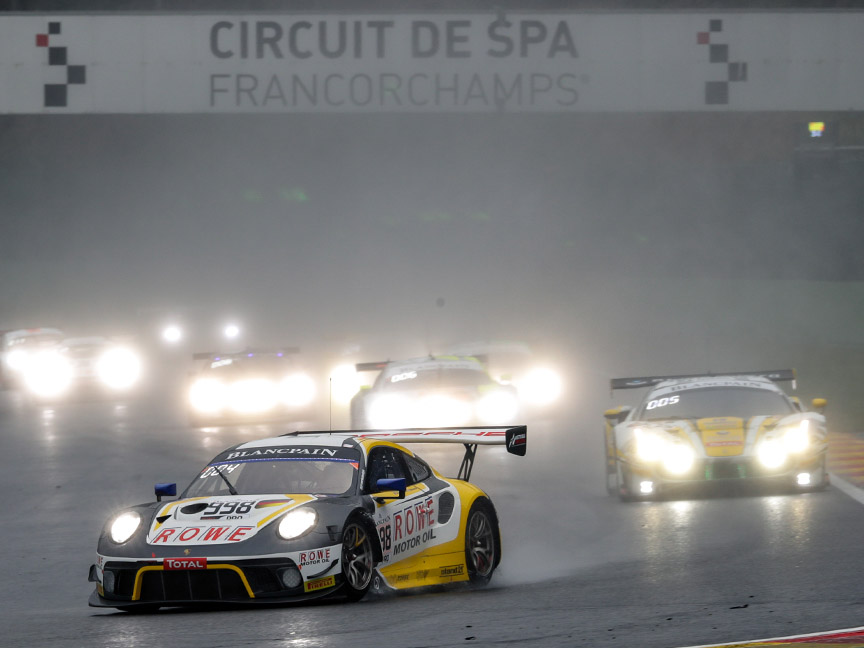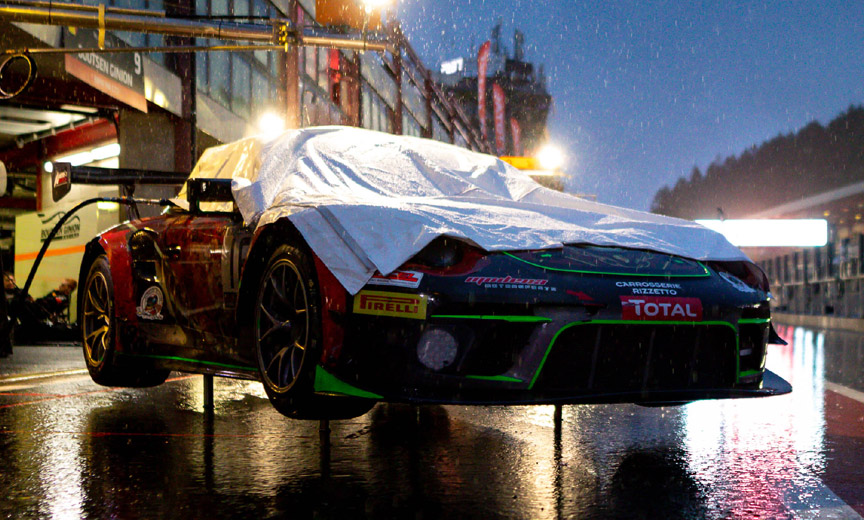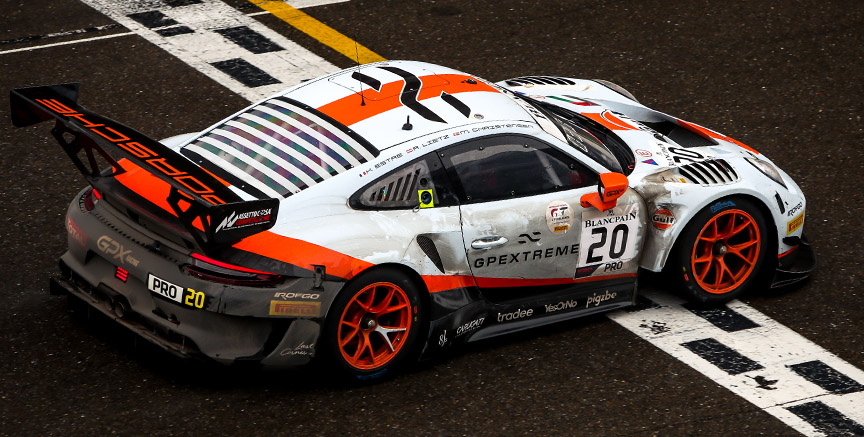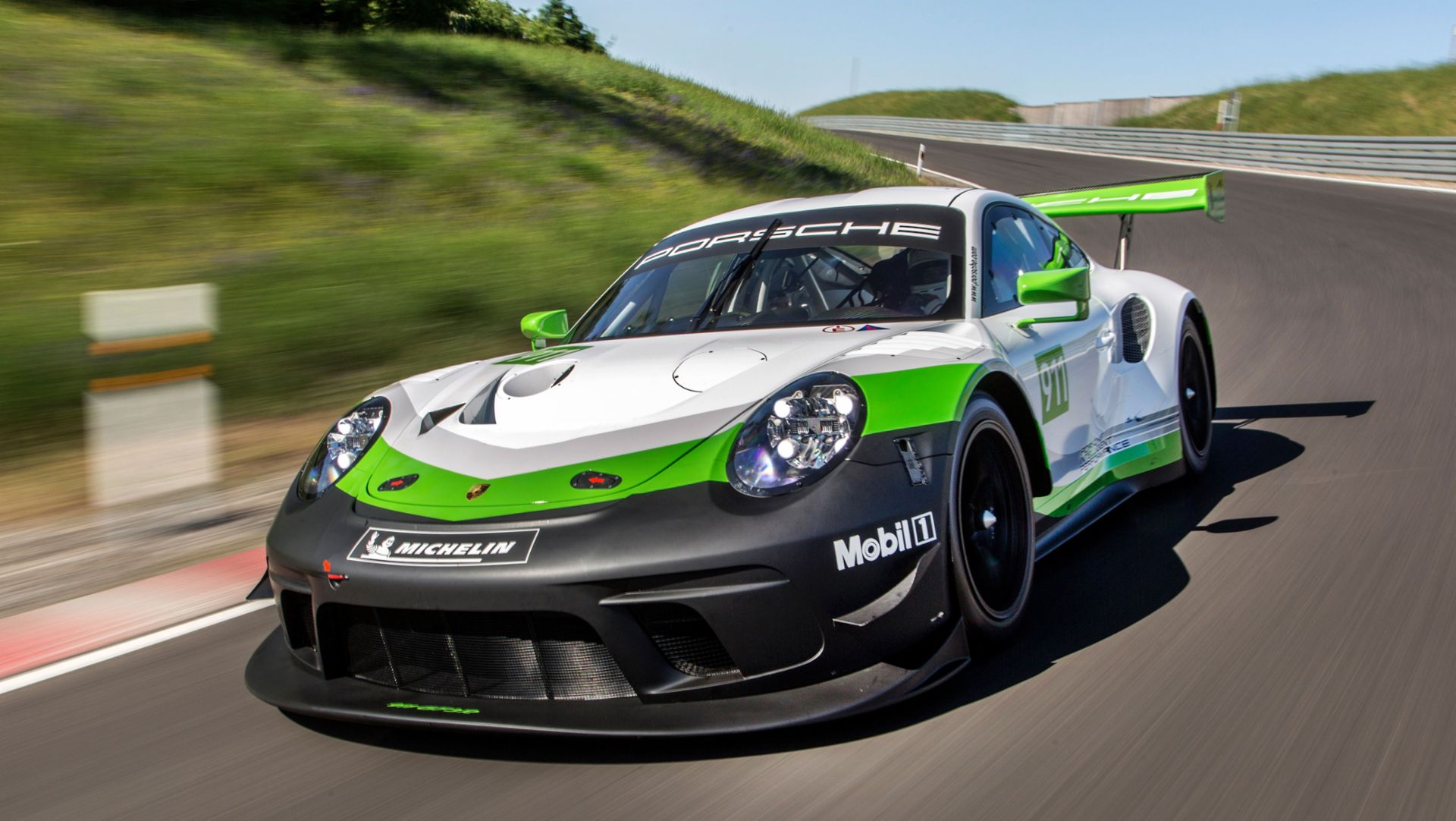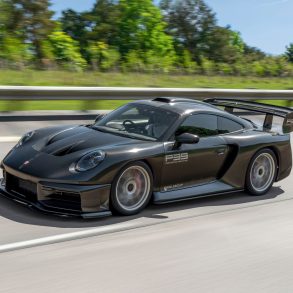(2019-2020) Porsche 911 GT3 R (991.2) – Ultimate Guide
Official photos: 2018 May 11 / Market launch: 2018 November / Premiere: 2019 January 4, Daytona test day
Press Release
During the development of the up to 404 kW (550 hp)* racing nine-eleven, special attention was paid to particularly efficient aerodynamics, further optimised safety as well as lowering the cost of servicing and spare parts.
The lightweight body design of the 911 GT3 RS production sports car featuring intelligent aluminium-steel composite construction has proven to be the ideal basis for the near-production race car. The roof, front hood and fairing, wheel arches, doors, side and tail sections as well as the rear lid and interior trim are made of particularly light carbon-fibre composite material (CFRP). All windows consist of polycarbonate.
The normally-aspirated engine offers significantly better driveability
Powering the new 911 GT3 R is a cutting-edge four-litre flat-six unit which is largely identical to the high-performance production engine of the road-legal 911 GT3 RS (911 GT3 RS: Fuel consumption combined 12.8 l/100 km; CO2 emissions 291 g/km). Direct fuel injection, which operates at pressures up to 200 bar, as well as variable valve timing adjustments of the intake and exhaust camshafts ensure a particularly efficient use of fuel. Moreover, compared to its predecessor, the normally-aspirated engine offers significantly better driveability and a broader usable rev range. The engine response is more precise due to six throttle butterflies. Power from the rear engine is transferred to the 310-mm-wide rear wheels via a Porsche sequential six-speed constant-mesh gearbox with an electronic shift actuator for particularly fast and precise gear changes. As in the GT road-going models, the driver changes gears via shift paddles conveniently positioned on the steering wheel. The clutch is electro-hydraulically controlled, which eliminates the need for the clutch pedal and assists quick race starts. Typical of the 911, the weight distribution ensures excellent traction and braking performances.
The spectacular aerodynamics of the 911 GT3 R also follows the example of the road car. The distinctive wheel arch air vents on the front fairings increase downforce at the front axle. Measuring 1,900 millimetres in width by 400 millimetres in depth, the rear wing lends aerodynamic balance. The tyre circumference at the front axle has grown from 650 to 680 millimetres. In tandem with the new Porsche double wishbone suspension, this ensures superior braking performances and consistency over the duration of the race.
The brake system of the 911 GT3 R also underwent further modifications and now offers increased stiffness and more precise control of the ABS. At the front axle, six-piston aluminium monobloc racing brake callipers combined with ventilated and grooved steel brake discs with a diameter of 390 millimetres ensure outstanding braking performances. Fitted at the rear axle are four-piston callipers and discs measuring 370 millimetres.
All controls have been perfectly aligned to suit the needs of the driver
Another development focus was on the safety features of the 911 GT3 R. In order to improve pit stop performance, the 120-litre FT3 safety fuel cell can now be refilled from the left or the right depending on the circuit layout. The doors and the side windows can be removed. The new racing bucket seat affords pilots even better protection in the event of a collision. The seats are now bolted at six points. In combination with the adjustable pedal box, the driver’s centre of gravity is optimised and offers increased safety in the event of an impact. In addition, the driver is protected thanks to a side impact element positioned in the driver’s door, which consists of a carbon-fibre Kevlar aluminium construction with energy-absorbing plastic foam.
The cockpit has been redesigned. All controls have been perfectly aligned to suit the needs of the driver. For the first time the 911 GT3 R features air-conditioning. This ensures ideal interior cooling and, thanks to the direct connection to the seat and driver’s helmet, enables particularly efficient cooling of the driver, which in turn helps them maintain concentration and a constant performance over the race.
The Story
| Car | 911 991.2 GT3 R |
911 991.1 GT3 R
|
| Engine | 4000 cc, bore 102.0 mm, stroke 81.5 mm |
4000 cc, bore 102.0 mm, stroke 81.5 mm
|
| Power | 404 kW without restrictor |
368 kW without restrictor
|
| Gearbox | Sequential 6-speed |
Sequential 6-speed
|
| Front brakes | 390 mm steel disc, 6-piston caliper |
380 mm steel disc, 6-piston caliper
|
| Rear brakes | 370 mm steel disc, 4-piston caliper |
372 mm steel disc, 4-piston caliper
|
| Front tyres/wheels | 30/68-18, 12.5×18 |
30/65-18, 12.0×18
|
| Rear tyres/wheels | 31/71-18, 13.0×18 |
31/71-18, 13.0×18
|
| Tank L | 120 | 120 |
| Dimensions | 4629 x 2002 | 4604 x 2002 |
| Weight |
*1220 kg/2689 lb
|
The GT3 R has always been placed between the GT3 Cup and the very expensive RSR. All the 991.2 racing cars have normally aspirated 4-litre engines. Compared to the 991.1 GT3 R, the 991.2 GT3 R engine offers a broader usable rev range and the engine response is more precise due to 6 throttle butterflies. The roof, front hood and fairing, wheel arches, doors, side and tail sections, rear lid and interior trim are made of carbon-fibre reinforced plastic (CFRP). The 991.2 GT3 R has a new double wishbone suspension.
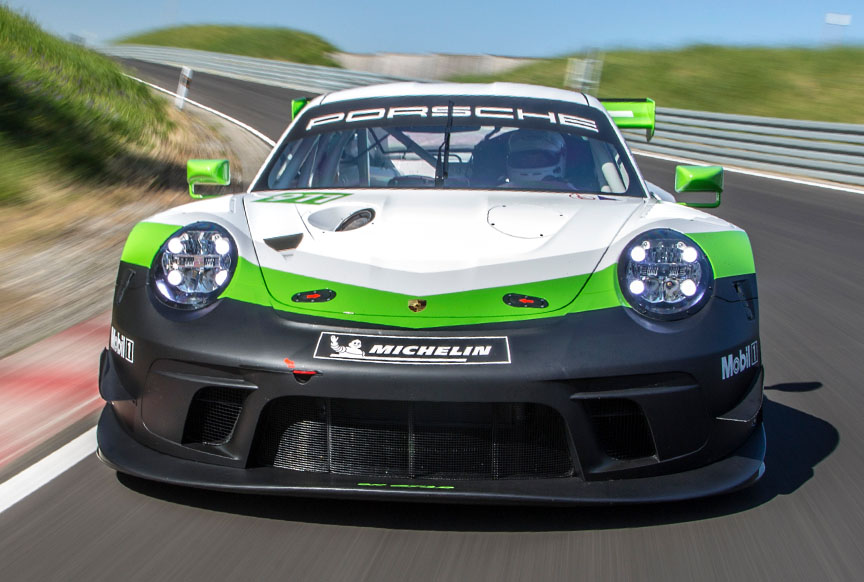


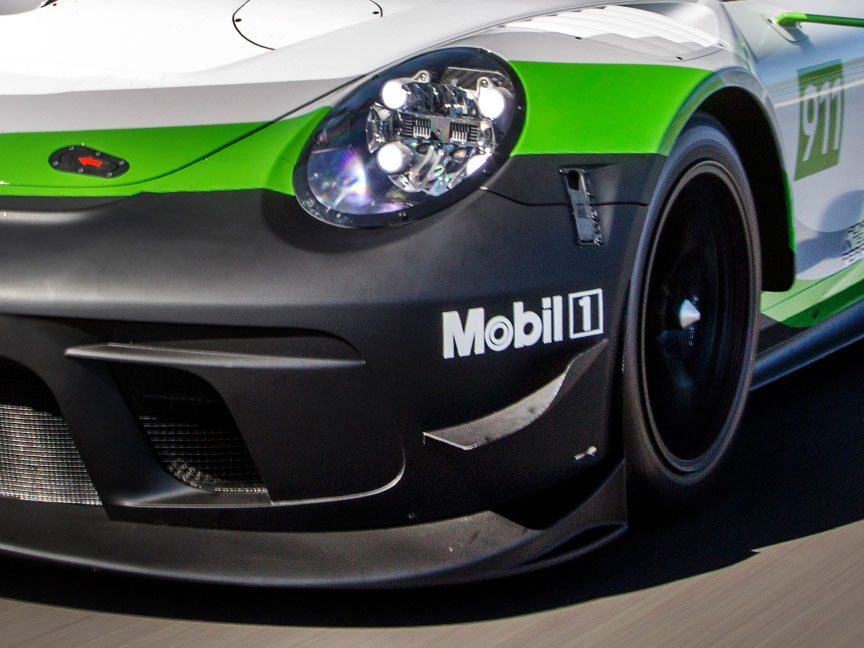
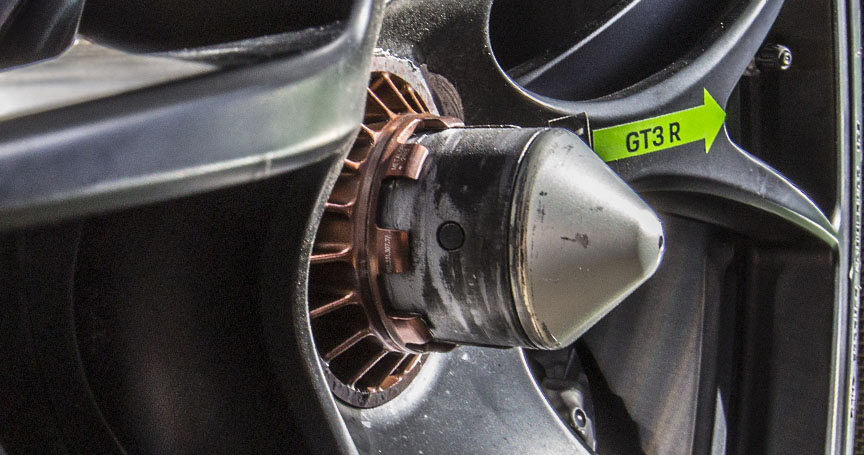
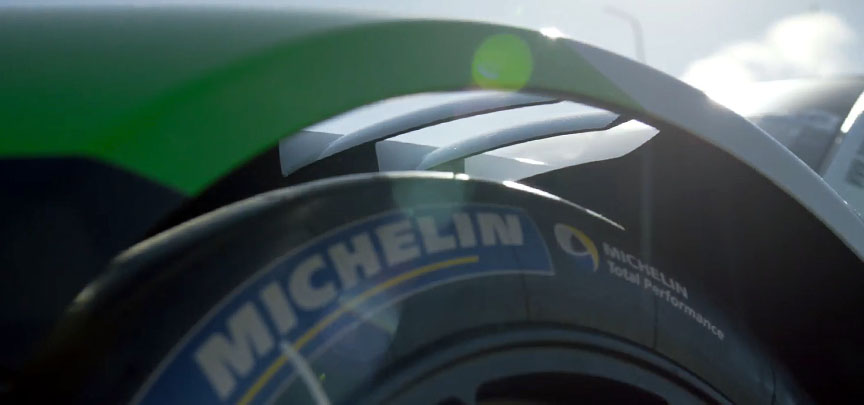
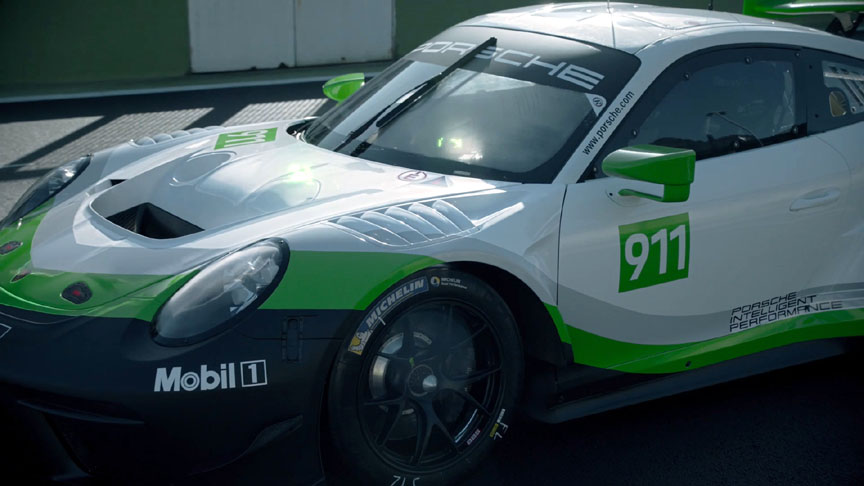
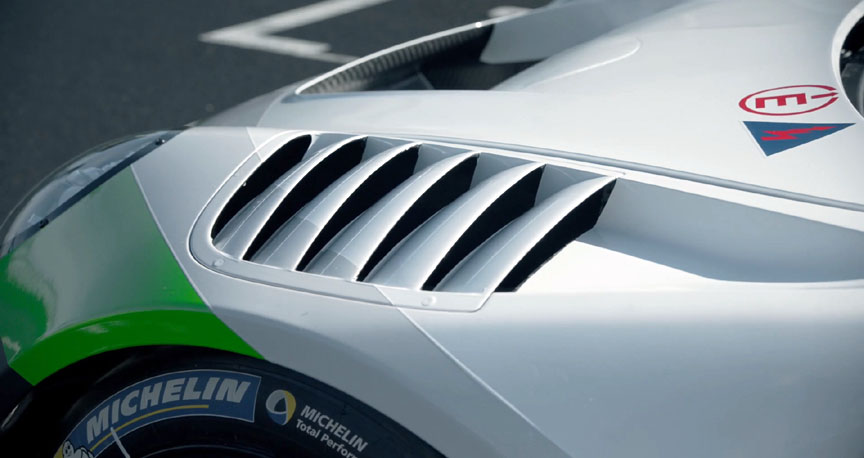
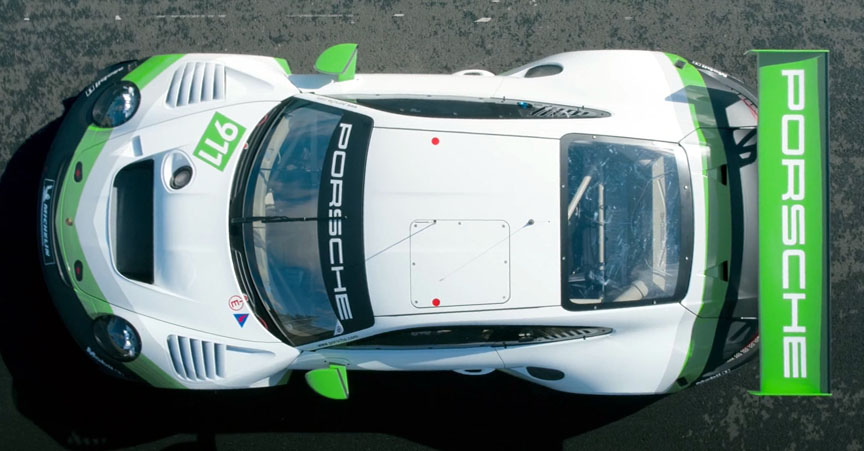

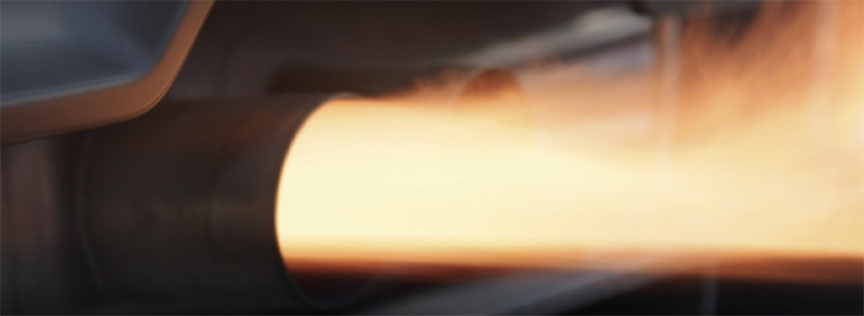
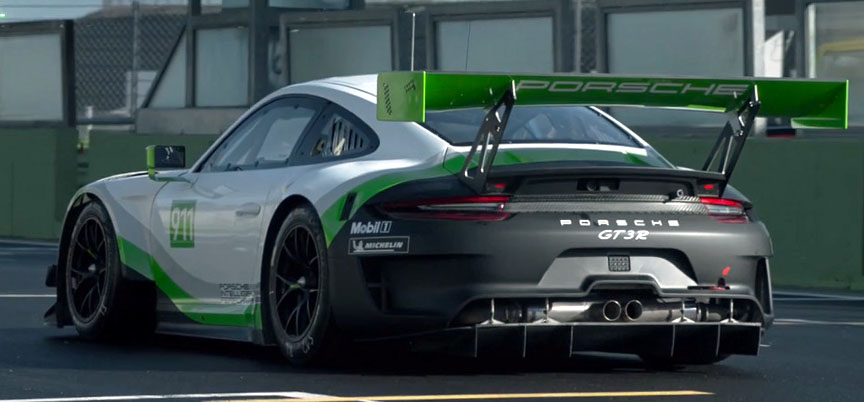
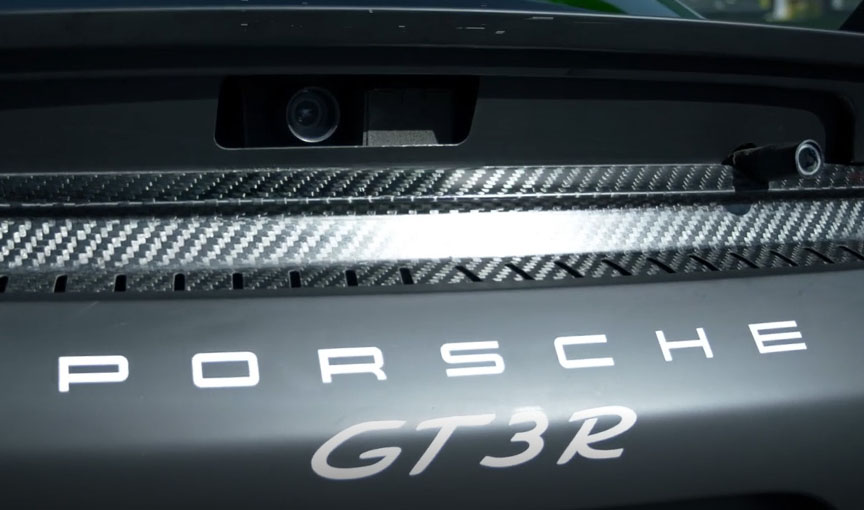
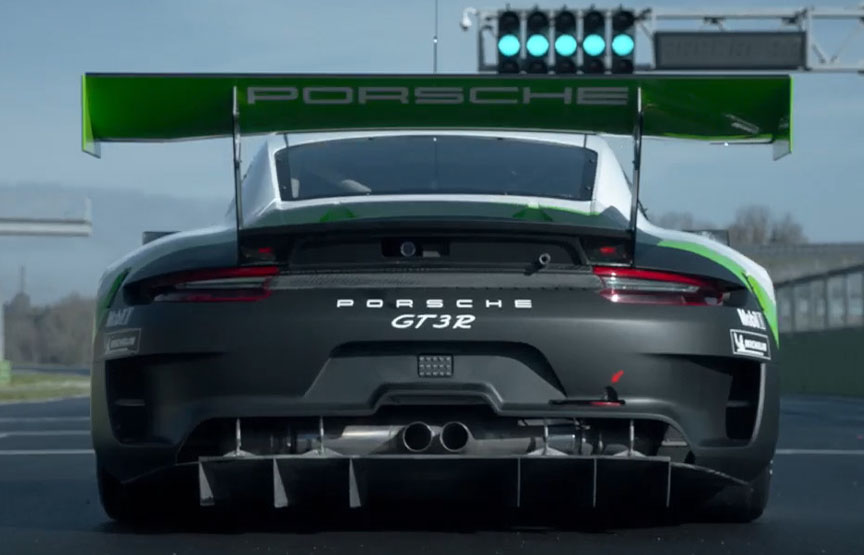
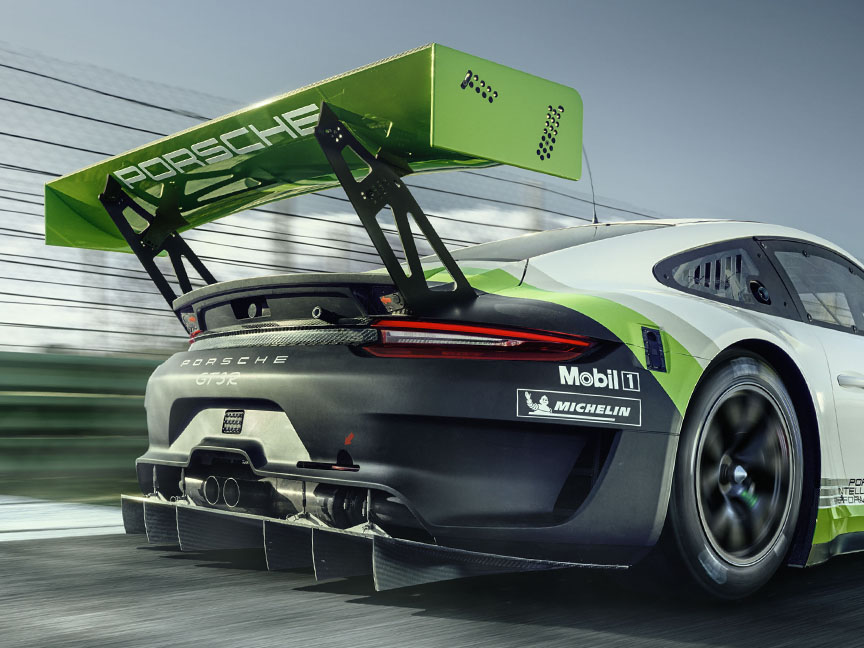
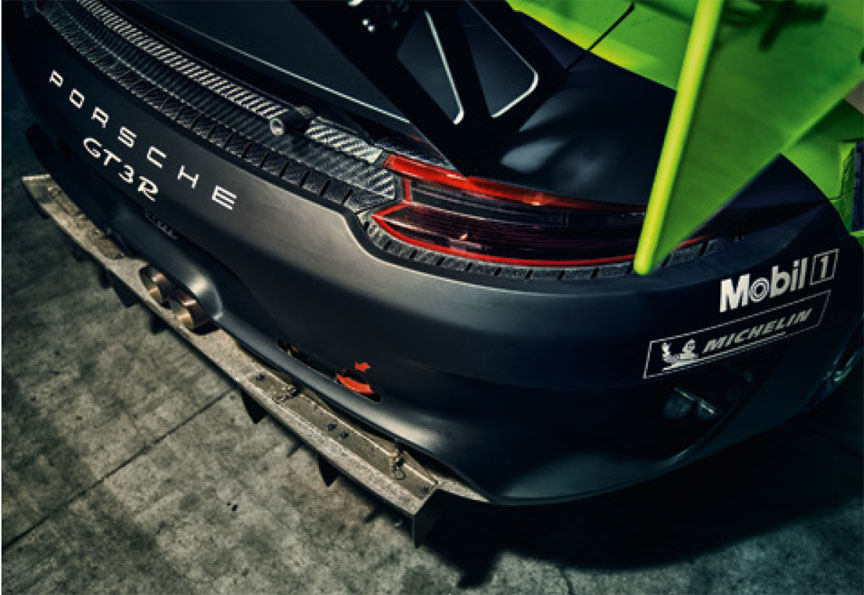
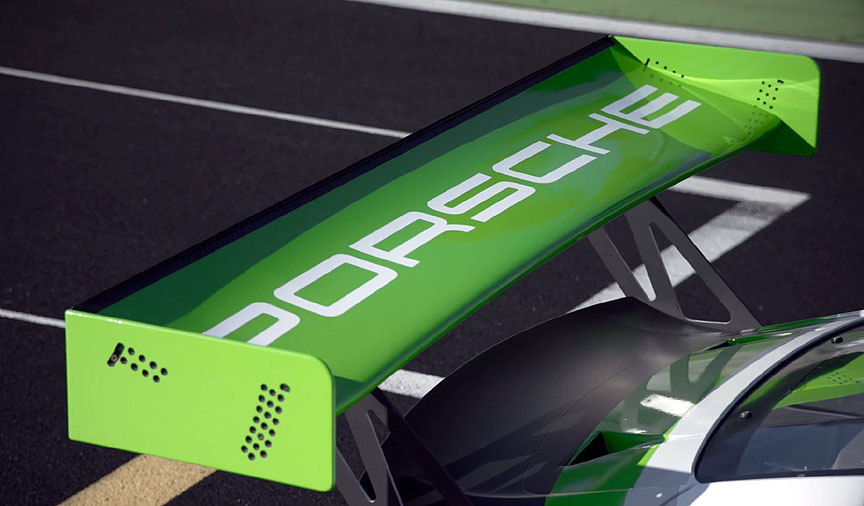
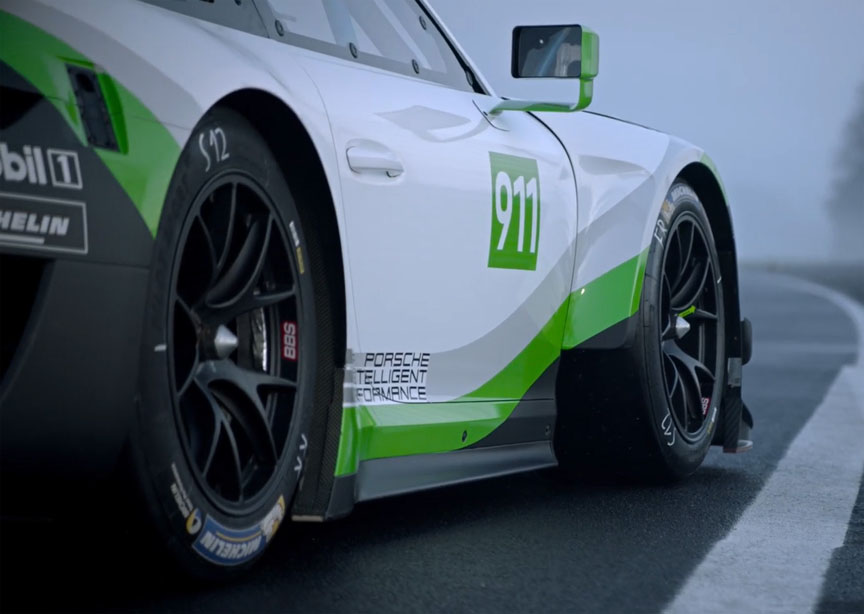
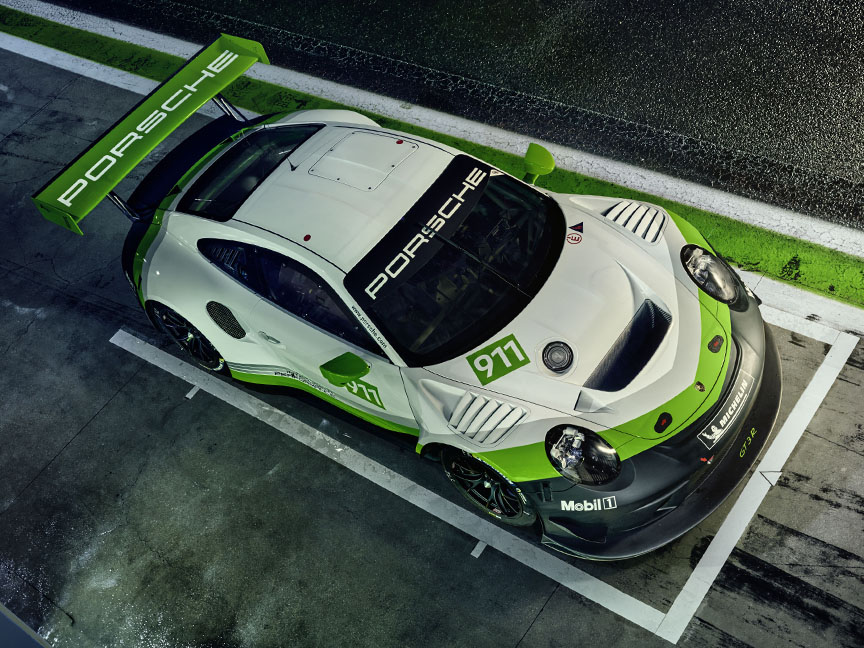
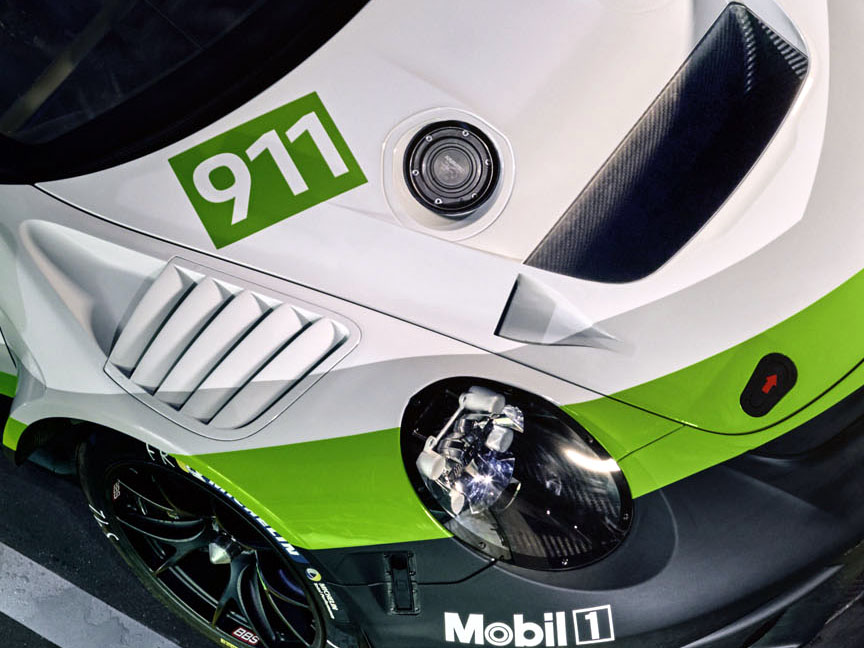
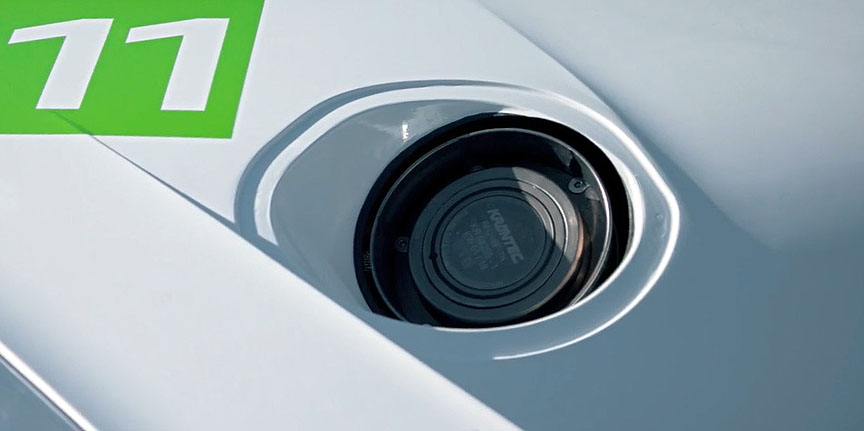
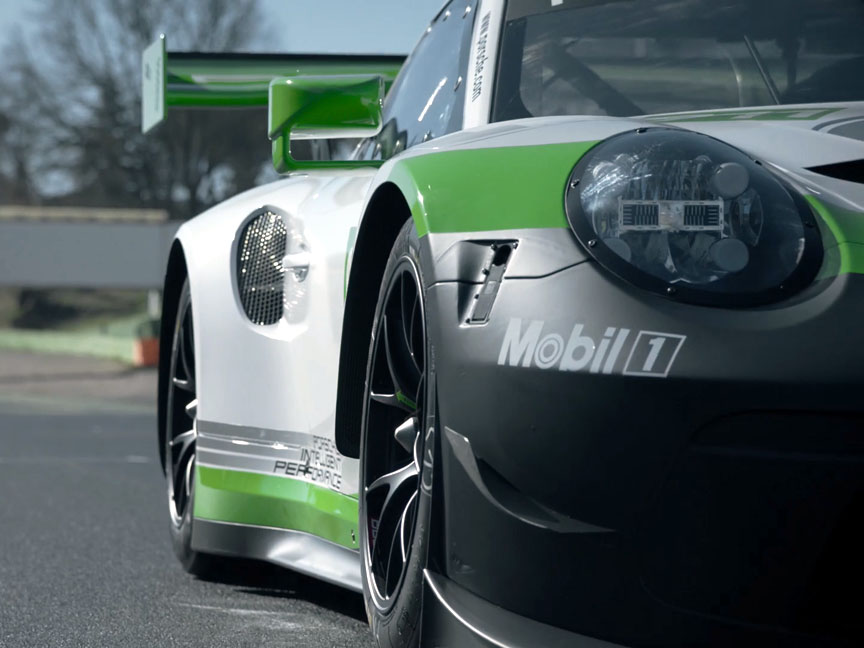
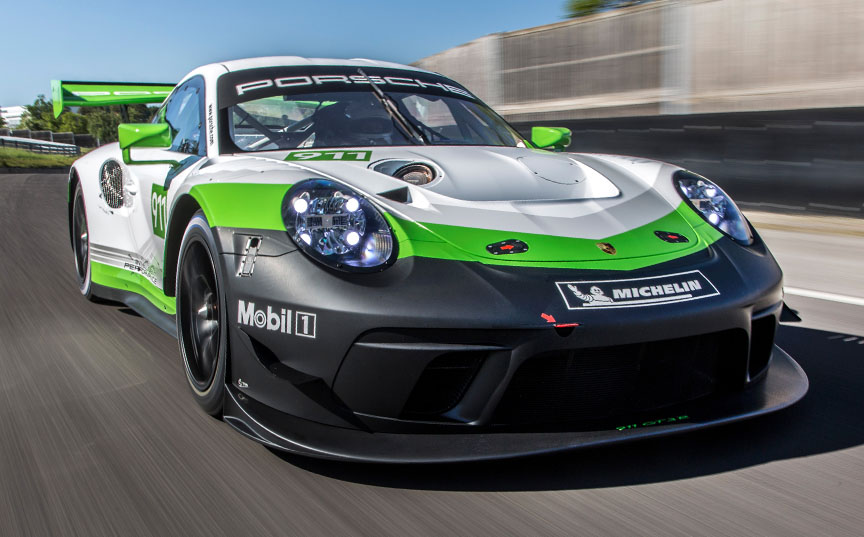

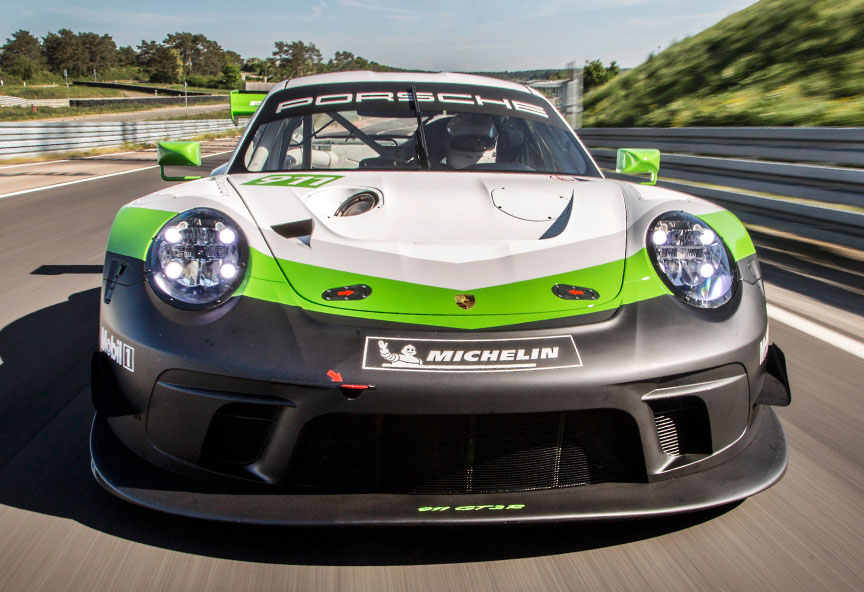
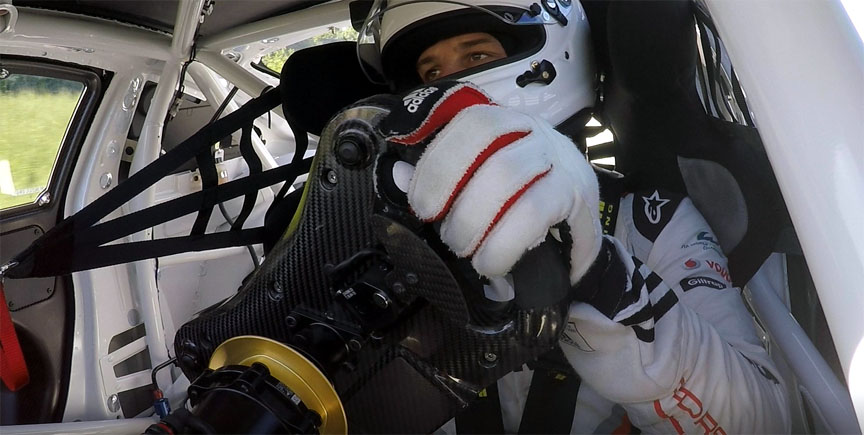
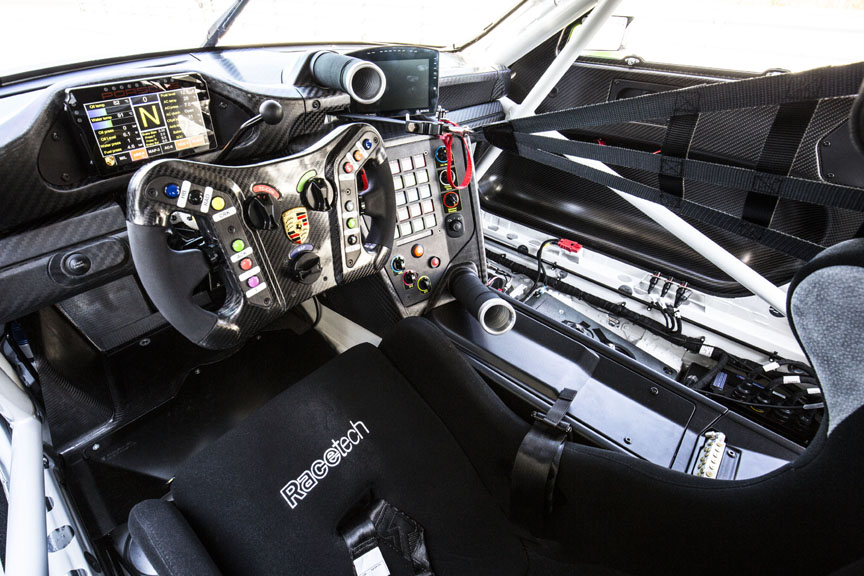
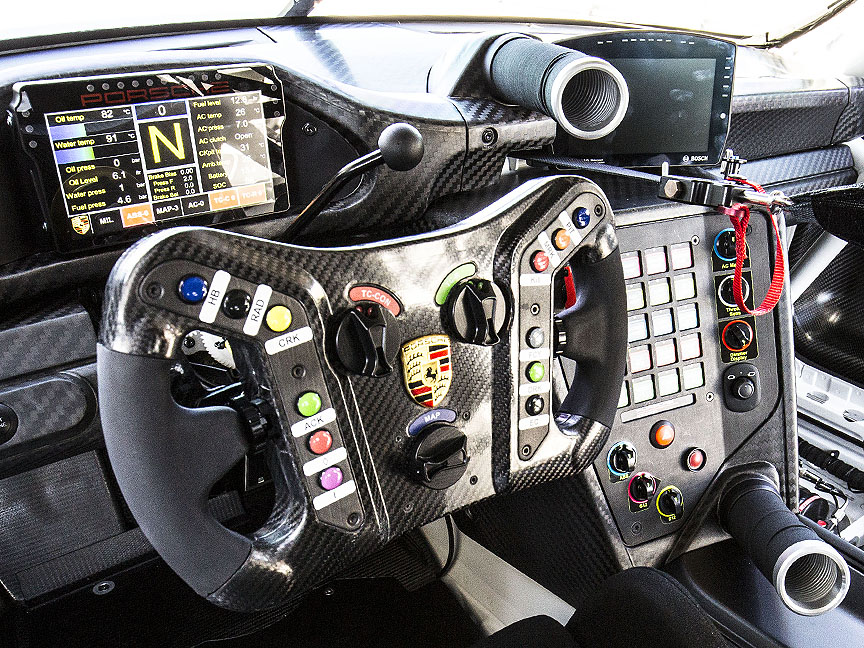
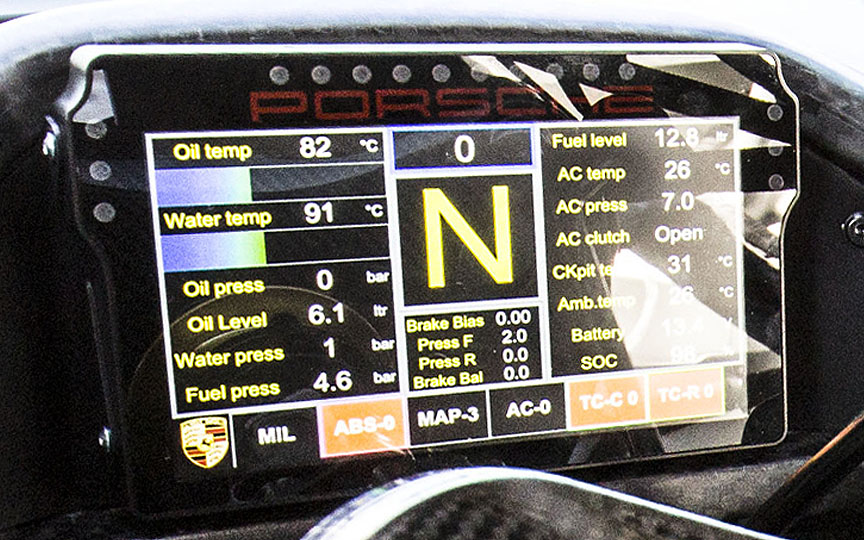
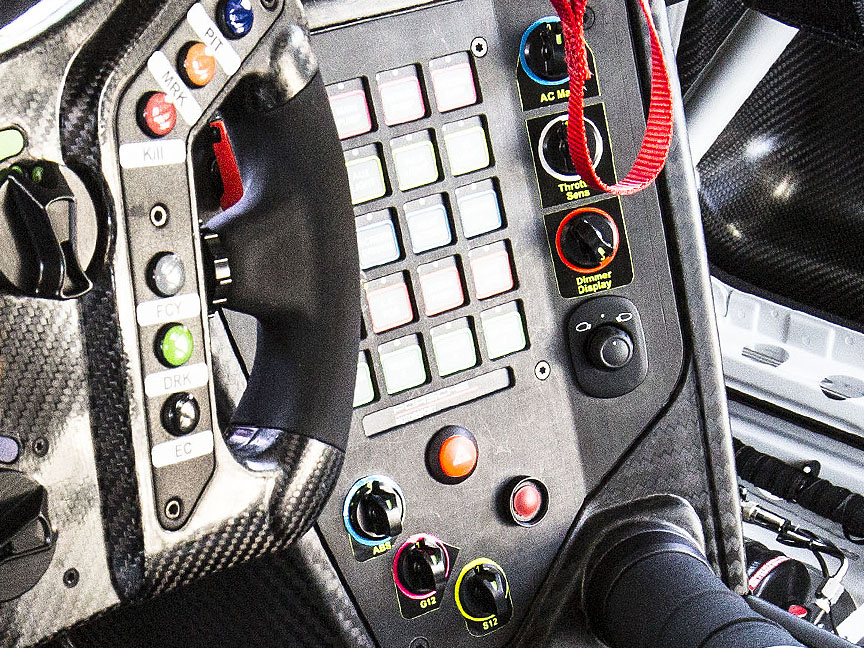
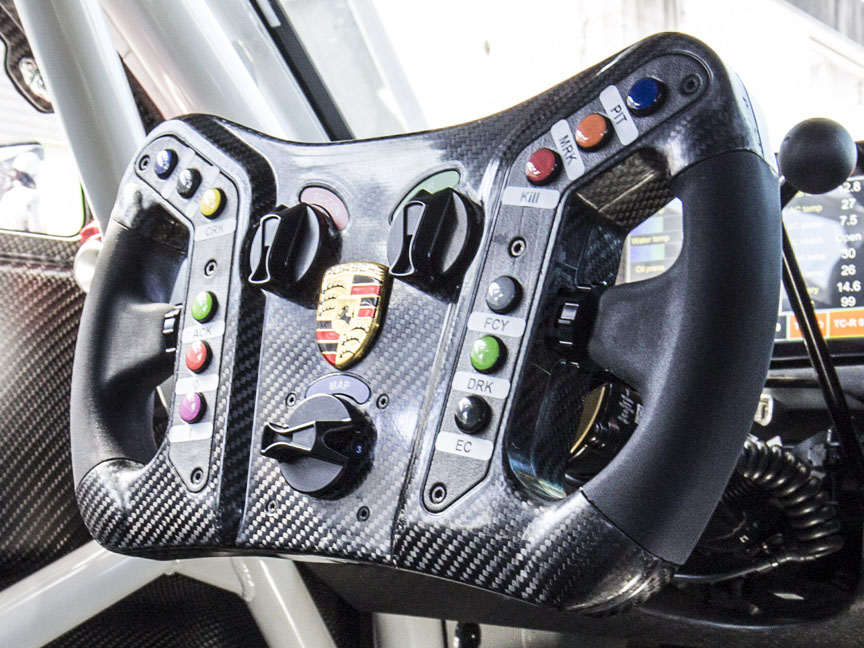
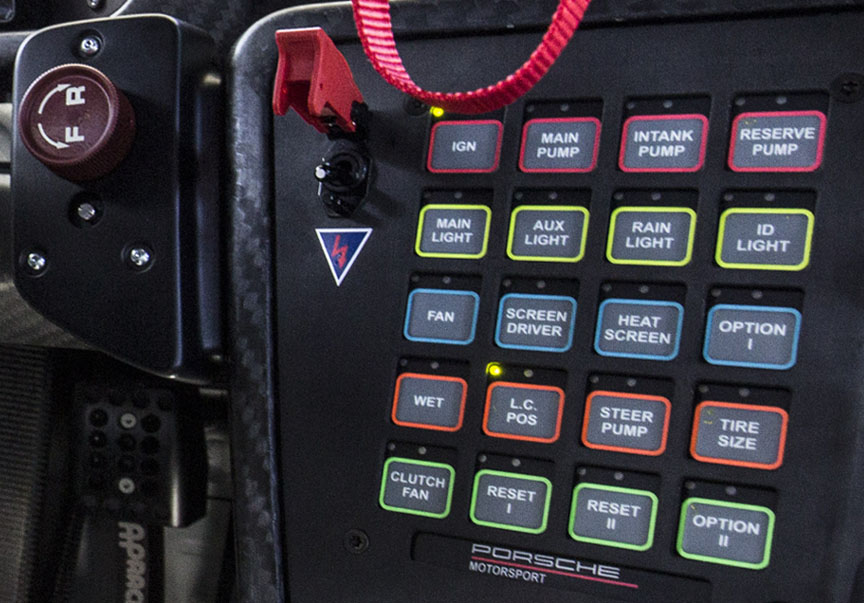
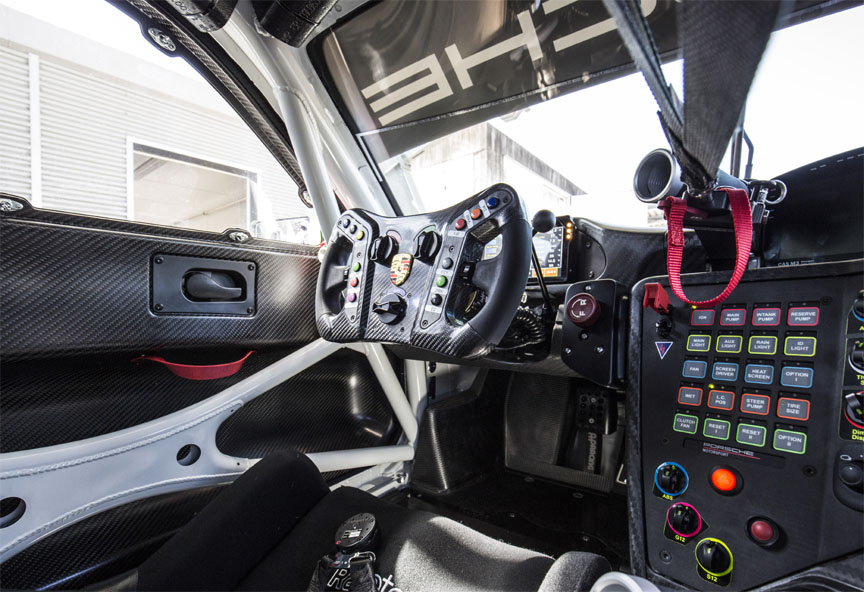
Optional equipment
IMSA kit – windshield braces, rear window braces, sensor package
FIA endurance kit – 2 extra LED lights in front fairing, clutch fan, GSM Low-Band (R+) telemetry, motorsport catalyst (depending on regulations), heated windshield
Channel extension for detailed engine data recording, fastest recording rate 1000 Hz
Front silencer
TPMS Tyre Pressure Monitoring System
Cockpit lighting
Start number illumination
2 auxiliary LED headlights

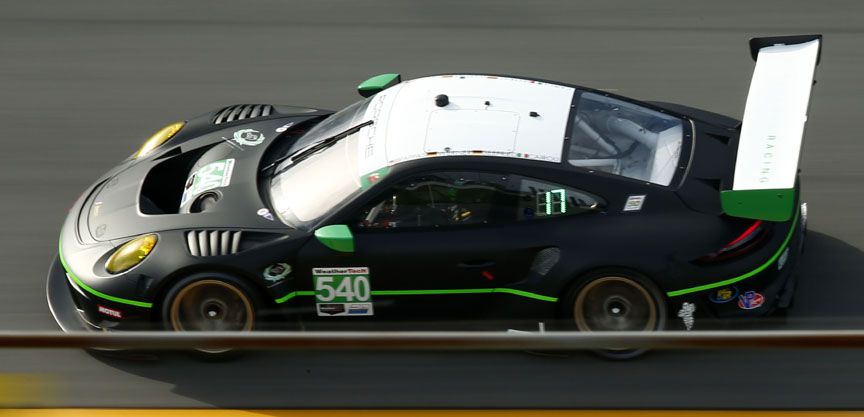
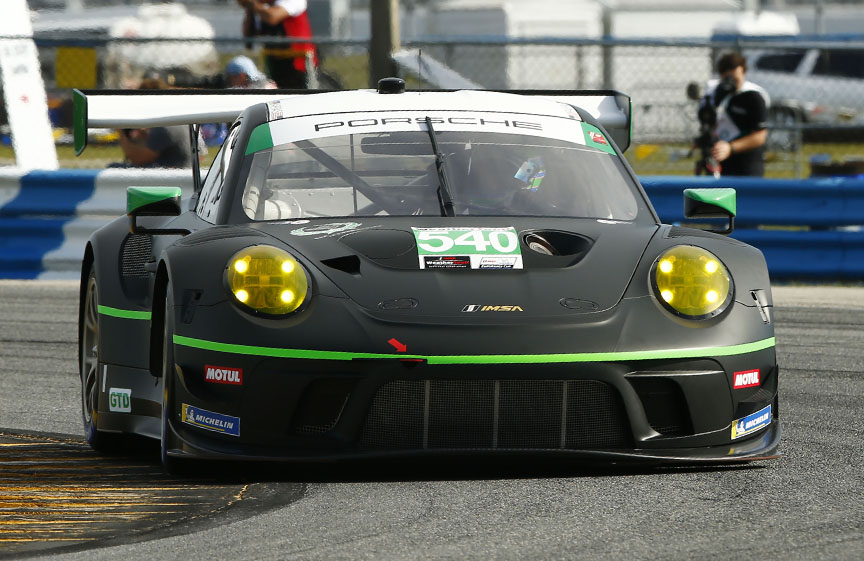

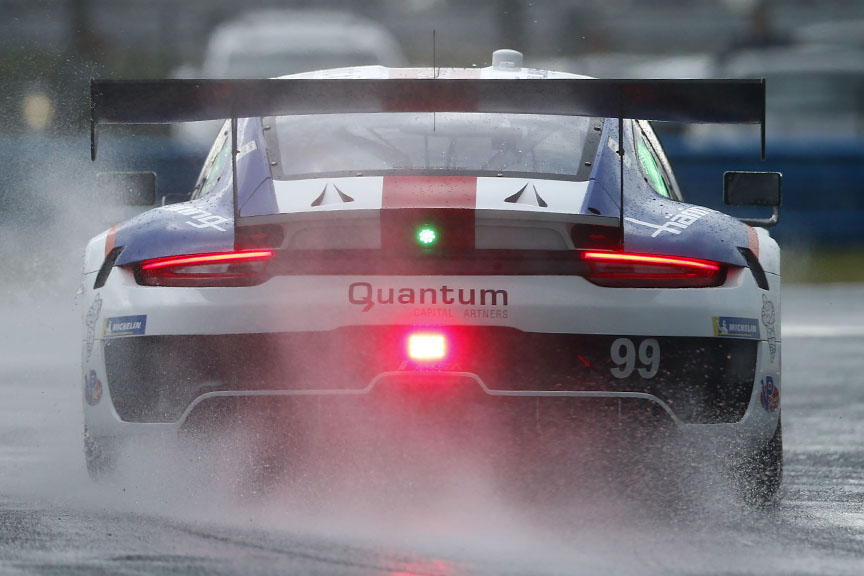
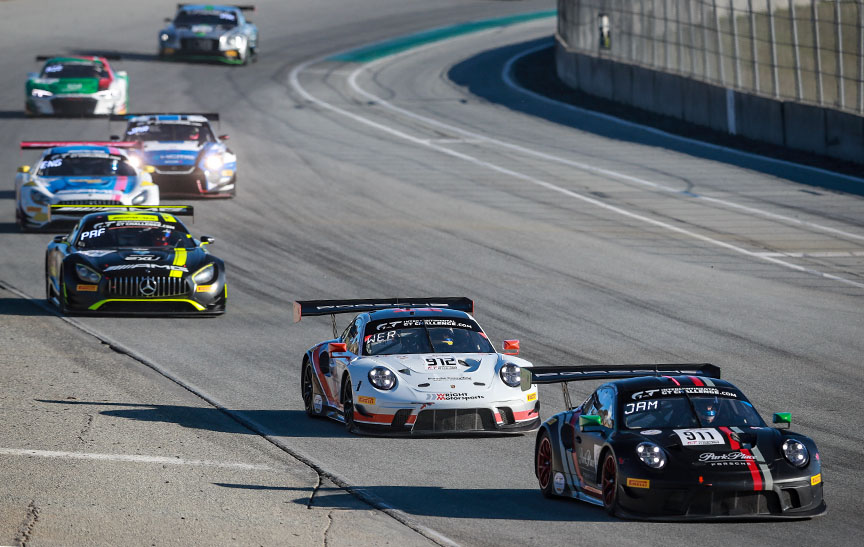
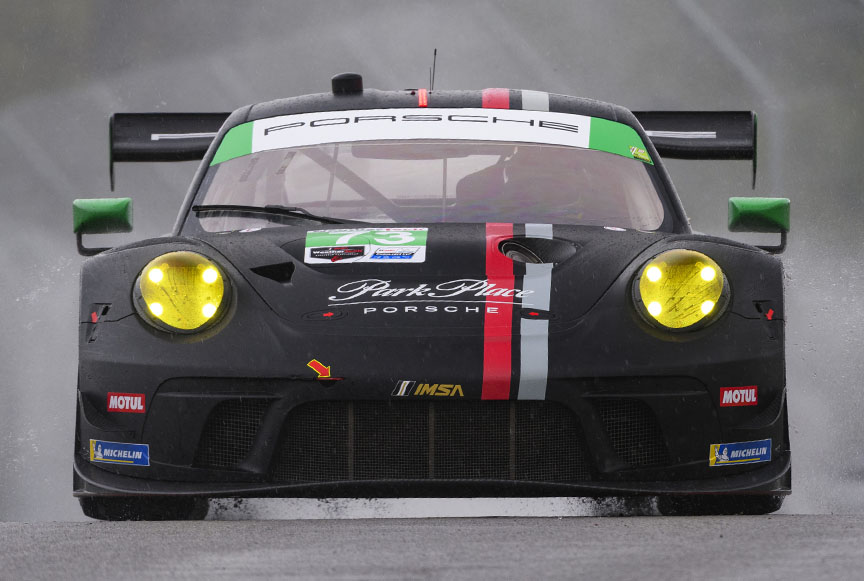
2019 Nürburgring 24h
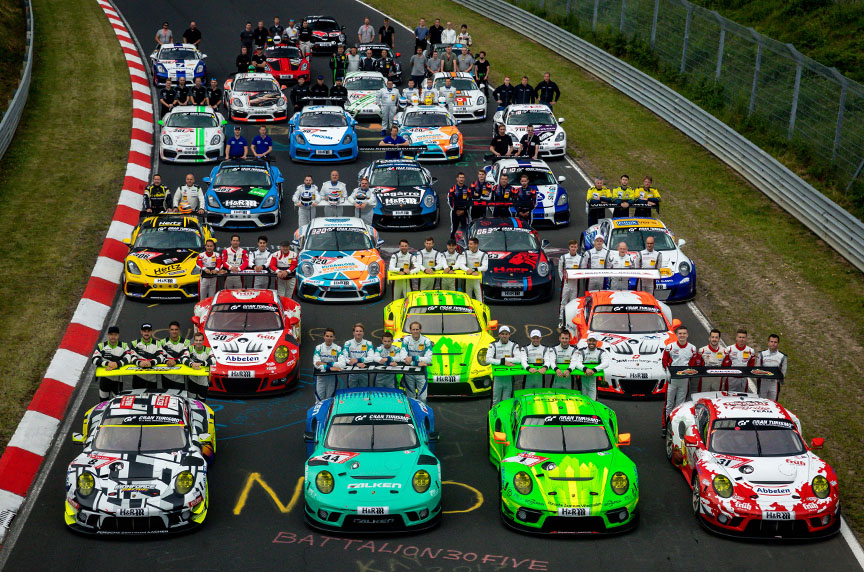
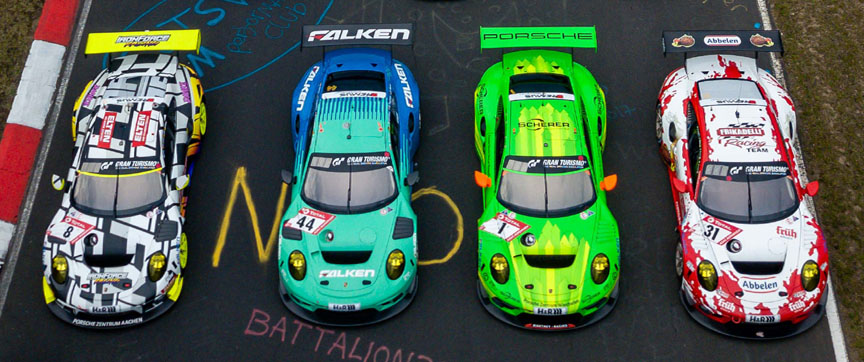
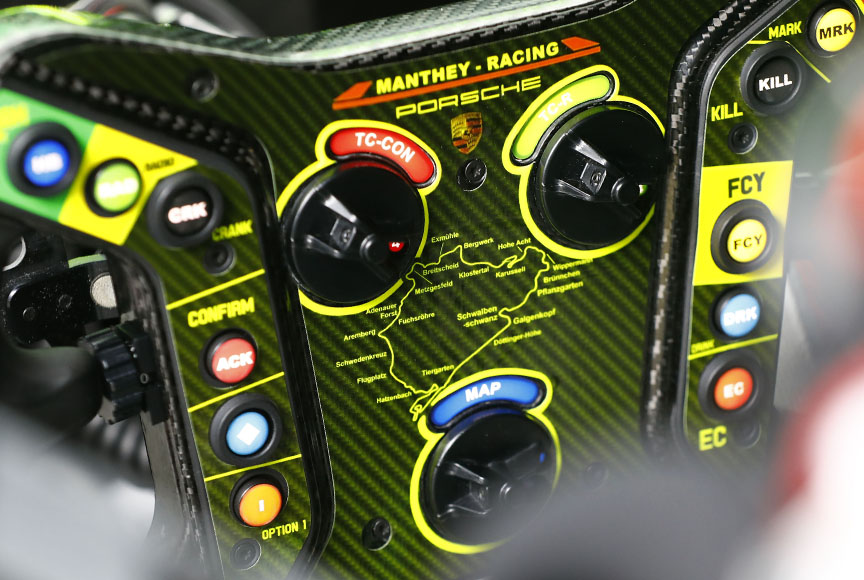
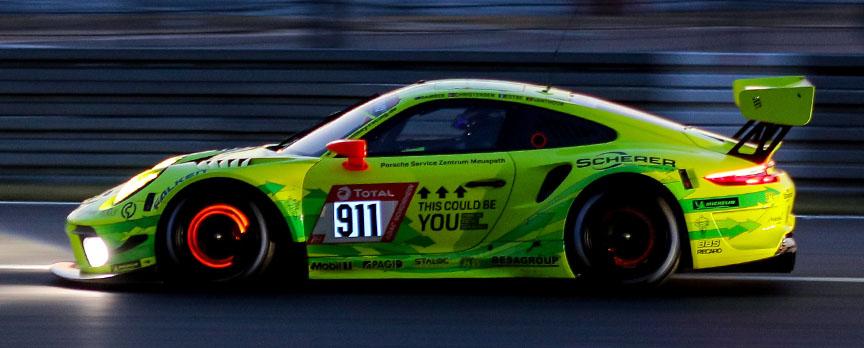
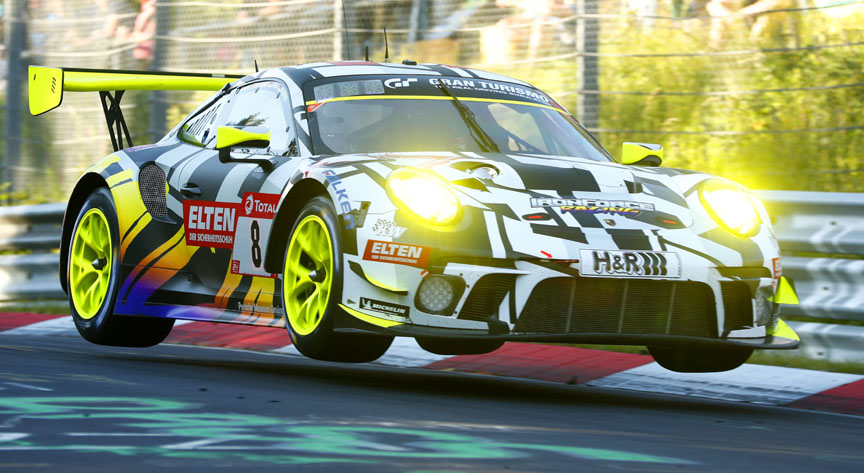
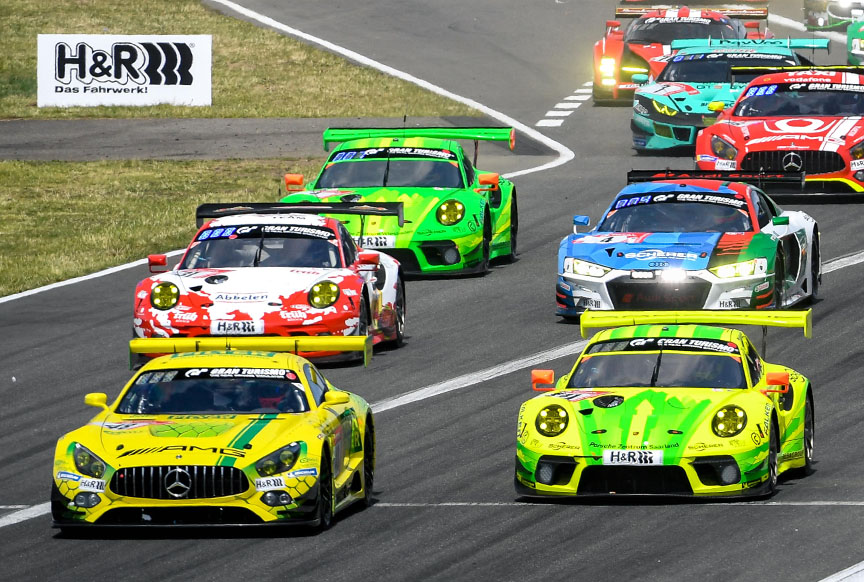
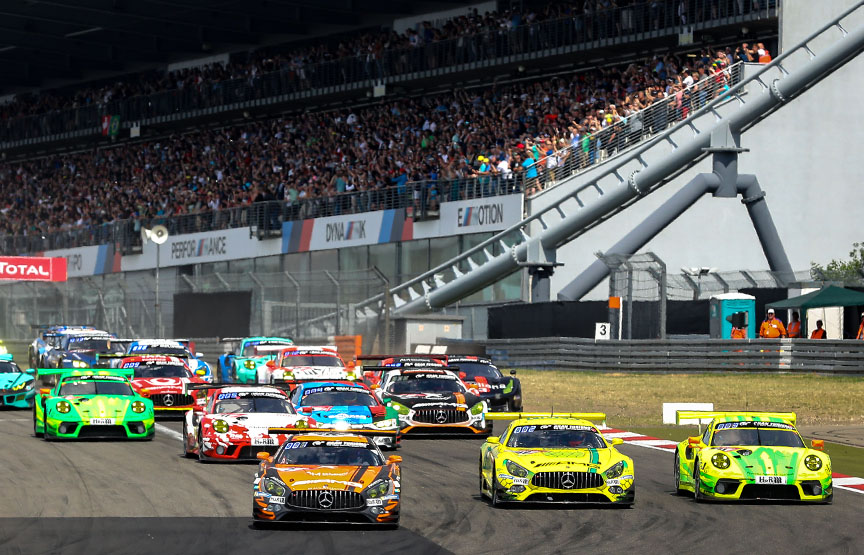
2019 Spa-Francorchamps 24h
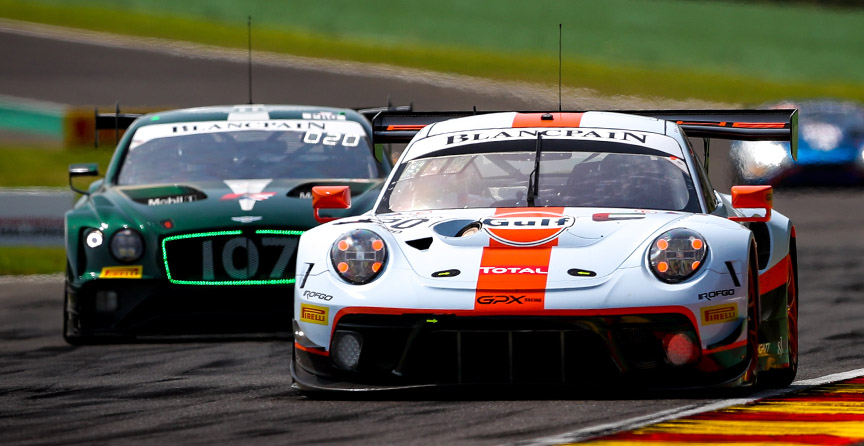
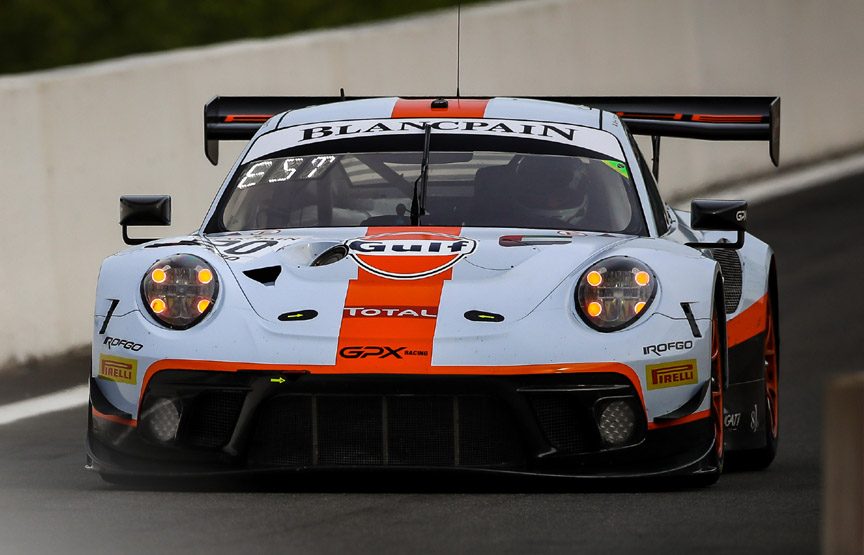
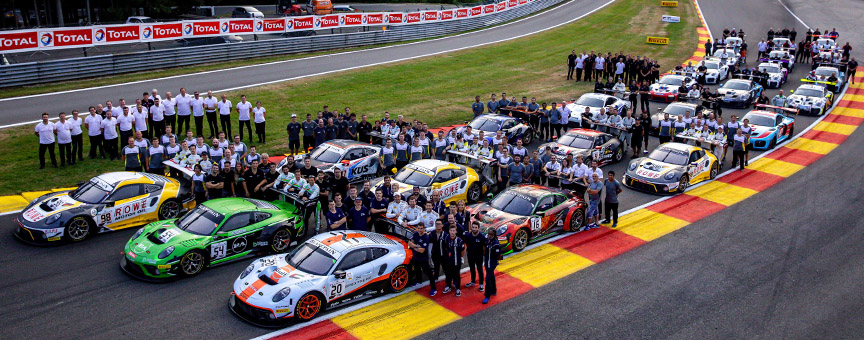
The race saw a 1-2 victory for Porsche 991.2 GT3 R. The #20 car driven by Michael Christensen, Kévin Estre and Richard Lietz finished first and the #998 car driven by Frederic Makowiecki, Patrick Pilet and Nick Tandy. All these were Porsche factory drivers driving for private teams this time. The race was held in wild weather conditions which suit the rear engined Porsches well as in slippery conditions the rear engined cars have very good traction. In the night the race was even halted for almost 6 hours due to heavy rain making it a 18 hour race. This was the 71st running of Spa 24h and Porsche’s 7th victory after 9 year gap.
